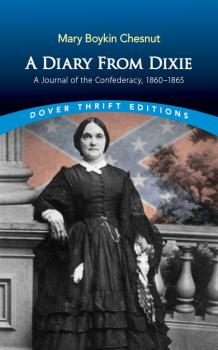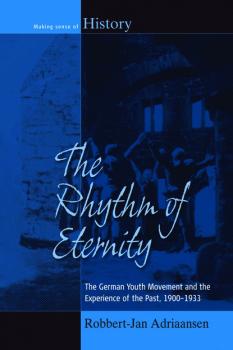Историческая литература
Различные книги в жанре Историческая литератураWar Letters of a Public-School Boy (WWI Centenary Series)
""In deciding to publish some of the letters written by the late Lieutenant H. P. M. Jones during his twenty-seven months' service with the British Army, accompanying them with a memoir, I was actuated by a desire, first, to enshrine the memory of a singularly noble and attractive personality; secondly, to describe a career which, though tragically cut short, was yet rich in honourable achievement; thirdly, to show the influence of the Great War on the mind of a public-school boy of high intellectual gifts and sensitive honour, who had shone with equal lustre as a scholar and as an athlete."" This book is part of the World War One Centenary series; creating, collating and reprinting new and old works of poetry, fiction, autobiography and analysis. The series forms a commemorative tribute to mark the passing of one of the world's bloodiest wars, offering new perspectives on this tragic yet fascinating period of human history. Each publication also includes brand new introductory essays and a timeline to help the reader place the work in its historical context.
Rubble Music
As the seat of Hitler's government, Berlin was the most frequently targeted city in Germany for Allied bombing campaigns during World War II. Air raids shelled celebrated monuments, left homes uninhabitable, and reduced much of the city to nothing but rubble. After the war's end, this apocalyptic landscape captured the imagination of artists, filmmakers, and writers, who used the ruins to engage with themes of alienation, disillusionment, and moral ambiguity. In Rubble Music, Abby Anderton explores the classical music culture of postwar Berlin, analyzing archival documents, period sources, and musical scores to identify the sound of civilian suffering after urban catastrophe. Anderton reveals how rubble functioned as a literal, figurative, psychological, and sonic element by examining the resonances of trauma heard in the German musical repertoire after 1945. With detailed explorations of reconstituted orchestral ensembles, opera companies, and radio stations, as well as analyses of performances and compositions that were beyond the reach of the Allied occupiers, Anderton demonstrates how German musicians worked through, cleared away, or built over the debris and devastation of the war.
A Diary from Dixie
Born into Southern aristocracy, Mary Boykin Chesnut (1823–86) married a rising star of the political scene who ultimately served as an aide to Confederate President Jefferson Davis. As a prominent hostess and popular guest in the highest circles of Confederate society, Chesnut possessed an insider's perspective on many of the Civil War's major events, which she recorded in vivid journal entries. Her diary recounts the social life that struggled to continue in the midst of war, the grim economic conditions that resulted from blockaded ports as well as how people's spirits rose and fell with each victory and defeat. Hailed by William Styron as "a great epic drama of our greatest national tragedy," Chesnut's annotated diary won the Pulitzer Prize for History in 1982 and served as a primary source for Ken Burns's celebrated Civil War documentary. This edition of the compelling narrative features photos and engravings from the original publication.
The Souls of Black Folk
This vintage book contains W. E. B. Du Bois' 1903 work, «The Souls of Black Folk». A classic work of American history and sociology, it constitutes a seminal piece of African-American literary history. It contains essays chiefly on the subject of race and is based on the author's own experiences as an African-American in the late nineteenth century. «The Souls of Black Folk» is a seminal early work in the field of sociology and is highly recommended for those with an interest in American history. Contents include: «The Forethought», «Of Our Spiritual Strivings», «Of the Dawn of Freedom», «Of Mr. Booker T. Washington and Others», «Of the Meaning of Progress», «Of the Wings of Atalanta», «Of the Training of Black Men», «Of the Black Belt», «Of the Quest of the Golden Fleece», «Of the Sons of Master and Man», «Of the Faith of the Fathers», et cetera. Many vintage books such as this are increasingly scarce and expensive. We are republishing this volume now in an affordable, modern edition complete with a specially commissioned new biography of the author.
Cyfrin Cewri
Mae Cyfri’n Cewri yn dathlu bywyd a gwaith mathemategwyr a gysylltir â Chymru. Pan gyfansoddwyd yr anthem genedlaethol ym 1856, roedd Cymru ym merw y Chwyldro Diwydiannol, gyda chymdeithasau gwyddonol yn codi fel madarch ar hyd a lled y wlad. Erbyn diwedd y ganrif, roedd ein dehongliad o’n diwylliant fel un sy’n cynnwys y gwyddorau yn ogystal â’r celfyddydau wedi culhau i gynnwys barddoniaeth, cerddoriaeth a chrefydd ar draul bron i bopeth arall. Yn dilyn poblogrwydd ei gyfrol Mae Pawb yn Cyfrif, mae’r awdur yma’n defnyddio’r un arddull i’n gwahodd i ymfalchïo yn ein mathemategwyr ac i ddangos sut y mae’r rhod wedi troi.
The Emperor's Old Clothes
For many years, scholars struggled to write the history of the constitution and political structure of the Holy Roman Empire. This book argues that this was because the political and social order could not be understood without considering the rituals and symbols that held the Empire together. What determined the rules (and whether they were followed) depended on complex symbolic-ritual actions. By examining key moments in the political history of the Empire, the author shows that it was a vocabulary of symbols, not the actual written laws, that formed a political language indispensable in maintaining the common order.
The Rhythm of Eternity
The Weimar era in Germany is often characterized as a time of significant change. Such periods of rupture transform the way people envision the past, present, and future. This book traces the conceptions of time and history in the Germany of the early 20th century. By focusing on both the discourse and practices of the youth movement, the author shows how it reinterpreted and revived the past to overthrow the premises of modern historical thought. In so doing, this book provides insight into the social implications of the ideological de-historicization of the past.
Winter 8000
Recounts some of the most dangerous feats in mountaineering history Insights into the human attraction to danger and suffering Award-winning author While you wouldn’t expect climbing an 8000-meter peak in winter to be a popular activity, there have been 178 expeditions (as of 2019) to the Himalaya and Karakoram during the cruelest season to do just that. Polish alpinist, Voytek Kurtyka, termed the practice the «art of suffering.» The stories here range from the French climber Elisabeth Revol’s solo winter attempt of Makalu, to American Cory Richards and his dramatic effort on Gasherbrum II with famed Italian alpinist Simone Moro and Kazakh hard man Denis Urubko. Award-winning author Bernadette McDonald traveled extensively to interview many of the climbers featured in this book–including Revol, the climbing partner of Tomek Mackiewicz, and Anna Mackiewicz, his widow, meeting them just a few months after Mackiewicz’s death on Nanga Parbat. McDonald’s many personal relationships with profiled climbers and her ability to tap into emotions and family histories lend Winter 8000 an intimacy too often lacking in mountaineering histories. These accounts prove the point: Nature is not subservient to man.
Sir Judas
"In «„Sir Judas,“» Sabatini attempts to draw a group of more or less famous events using the fiction form, but without amplifying it by imagination. Each incident is an actual historic happening; the dialogue is such as was chronicled at the time, added to by the paraphrases of contemporary chroniclers; the settings are authentic. A hard task, this, the author has set himself, but his labor was lightened by being able to choose the most vivid and bizarre “nights” in all countries and all periods of history. How greatly he has succeeded is for the reader to judge.<P> This story, taken from the famous pulp magazine «„Adventure,“» includes the original interior artwork."
Red Flag Wounded
Red Flag Wounded brings together essays covering the controversies and debates over the fraught history of the Soviet Union from the revolution to its disintegration. Those monumental years were marked not only by violence, mass killing, and the brutal overturning of a peasant society but also by the modernisation and industrialisation of the largest country in the world, the victory over fascism, and the slow recovery of society after the nightmare of Stalinism.Ronald Grigor Suny is one of the most prominent experts on the revolution, the fate of the non-Russian peoples of the Soviet empire, and the twists and turns of Western historiography of the Soviet experience. As a biographer of Stalin and a long-time commentator on Russian and Soviet affairs, he brings novel insights to a history that has been misunderstood and deliberately distorted in the public sphere. For a fresh look at a story that affects our world today, this is the place to begin.









